What is rhubarb, exactly?
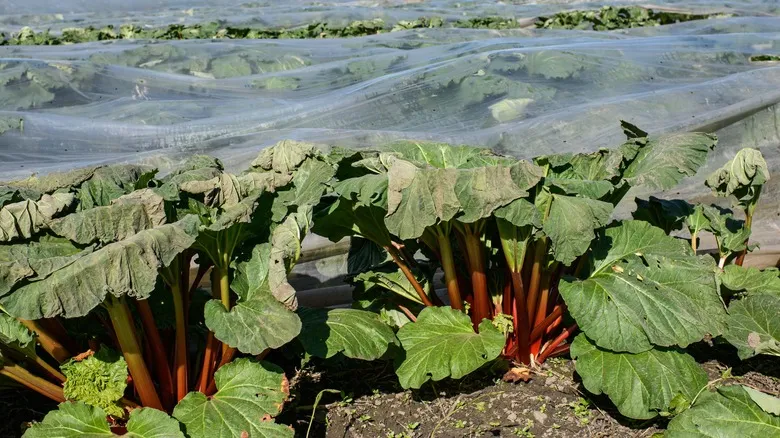
Rhubarb is a resilient perennial plant that thrives in cooler climates, particularly in the northern regions of the U.S. and Canada. One notable variety is called Canada Red. In the southern United States, rhubarb is less common due to its intolerance to heat; it requires colder temperatures (below 40 degrees Fahrenheit) to initiate its growth each year. Belonging to the buckwheat family (Polygonaceae), rhubarb is related to garden sorrel. While not all rhubarb species are safe to eat, the edible ones are classified as Rheum rhabarbarum.
Originally from Siberia, rhubarb is now cultivated worldwide, primarily during the spring and summer months. It has been used for medicinal purposes for centuries, but it wasn't until the 1700s that people began to consume it. There are several distinctive varieties of edible rhubarb, such as the Crimson Cherry and Victoria, which can grow up to four feet tall, as well as the Holstein Blood and Glaskins Perpetual varieties, known for their deep red stalks — all popular for baking. Other varieties may appear more green. The Frambozen Rood and German Wine varieties are often used in beverages. Some rhubarb grows wild, while others are cultivated in fields or greenhouses.
Don't eat rhubarb leaves
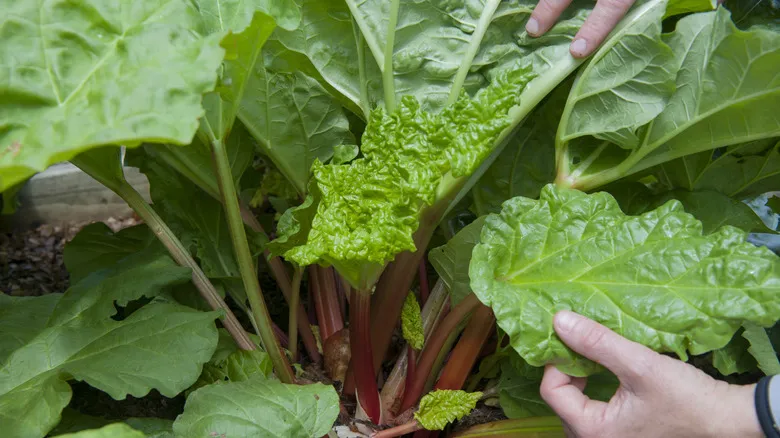
Unlike other leafy greens available at the market, rhubarb leaves are not edible. You shouldn't sauté or stew rhubarb leaves as you would with Swiss chard, rainbow chard, kale, or collard greens. In fact, rhubarb leaves are completely unsafe to eat.
These leaves can cause cramps and nausea due to their high levels of oxalic acid, which can be lethal if ingested in large amounts. People likely learned this lesson the hard way when they first began consuming rhubarb centuries ago, quickly realizing that only the stalks were safe to eat. Some even believed it was unsafe to harvest rhubarb stalks later in the summer, as the oxalic acid levels in the leaves would increase throughout the growing season. While the stalks themselves remain safe to consume, it is advised to avoid harvesting rhubarb after a hard freeze, as extreme temperatures may cause oxalic acid crystals to migrate into the stems. However, rhubarb can be cultivated in winter to boost overall annual yield. This "forced" rhubarb is grown indoors in greenhouses, making it unaffected by frost.
Enjoy edible rhubarb stems

The rhubarb plant's stem is the star ingredient in cooking. Tall, crisp, and tangy, it can be used in a wide range of both sweet and savory recipes. Cleaning and preparing rhubarb stems is relatively straightforward. They bear a resemblance to celery, but these tough, sour stalks are not always pleasant to eat raw. However, when cooked—often with a sprinkle of sugar—they transform into a delightfully tangy addition to various dishes and drinks. Interestingly, there are also some sweeter rhubarb varieties that can be enjoyed raw.
It's perfectly fine to consume green rhubarb. The color of the stalk does not necessarily indicate its ripeness for cooking or its sweetness. Some rhubarb varieties are inherently more red, while others may be pink, spotted, or even green when they are fully ripe and ready to eat. Additionally, the sweeter varieties are not always the ones that are red.
Preparing rhubarb for consumption
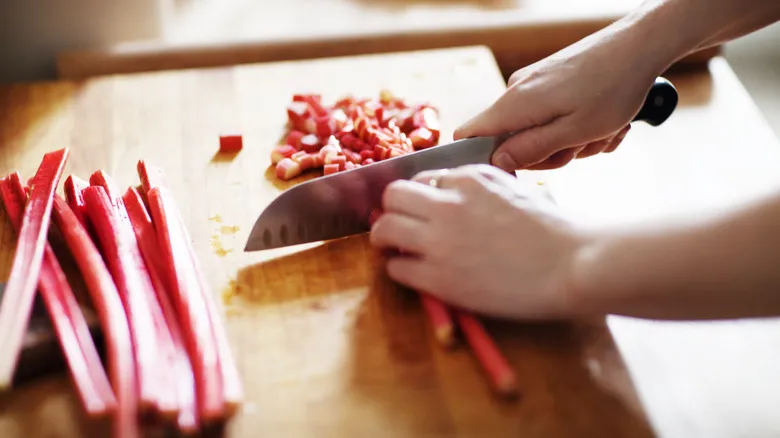
Preparing rhubarb can be quite simple—just be sure to discard the leaves and rinse off any dirt. You can often find pre-trimmed rhubarb at the store, ready for use. However, if you're in the right climate, rhubarb is truly one of the hidden treasures at the farmer's market.
British celebrity chef Jamie Oliver has shared some quick and straightforward tips for preparing rhubarb, which elevate the basic method just a bit. He suggests cutting the stalks into centimeter-thick slices and cooking them with sugar, ginger, and thyme for added flavor. After a few minutes, you can either strain the softened rhubarb from its juices (which can be used as a cordial in drinks and sauces) or continue cooking it down into a compote. The finished rhubarb can be stored in the fridge and used in various drinks and dishes. Alternatively, you can roast chopped rhubarb instead of cooking it on the stovetop.
Using canned ingredients for desserts can be just as effective, if not better, than using fresh ones, depending on the recipe. Canned rhubarb is a convenient option when fresh rhubarb is unavailable or when you're short on time. It's also a great choice for satisfying rhubarb cravings out of season. You can typically find canned rhubarb in the baking or canned vegetable sections, or you can order it online for added convenience. Just be mindful of the sugar content in canned rhubarb and adjust your recipe as needed.
Baking with rhubarb
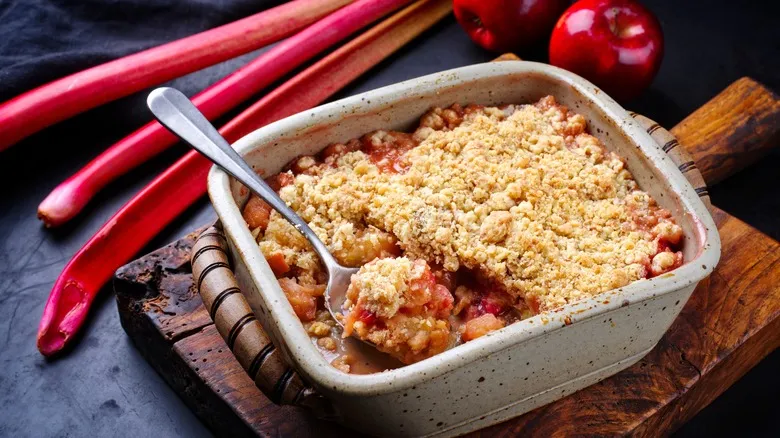
Strawberry rhubarb pie is likely the first dish that springs to mind when you think of rhubarb. These two vibrant and fresh ingredients typically grow in season together, which is probably how they became a classic pairing in this beloved early summer dessert. It's a popular choice in many households, particularly in the U.K. and Canada. If you haven't tried making a strawberry rhubarb pie yet, it's definitely worth it, and there are numerous other delicious strawberry rhubarb treats to explore, such as crumbles, bars, or cakes.
However, rhubarb doesn't have to be paired solely with strawberries. When sweetened adequately, rhubarb can shine on its own as a standout flavor. If you're curious about rhubarb, consider trying this simple rhubarb cake. Apple and custard are also traditional companions for rhubarb — you could whip up an apple rhubarb crumble served with warm custard, or bake some rhubarb and custard bars for your next gathering. Additionally, rhubarb pairs wonderfully with warming spices like ginger, which enhance its tangy taste. Rhubarb and cardamom oat muffins make for a delightful breakfast option.
Keep in mind that fresh rhubarb can release a significant amount of liquid when cooked, so you might want to drain some of the syrup and juices before incorporating it into certain recipes. This isn't usually an issue for crisps or crumbles, but cakes and pies can become soggy if there's too much liquid.
Cooking with rhubarb
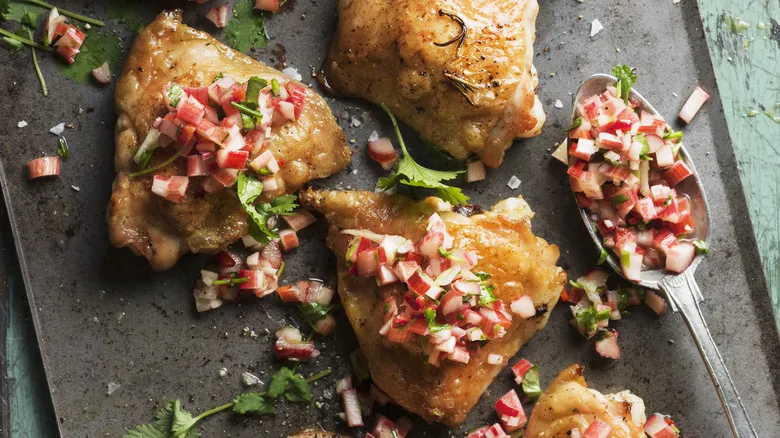
Rhubarb has a variety of culinary applications beyond just baking. For instance, you can cook it down to create a delicious jam. Varieties like rhubarb, strawberry-rhubarb, and rhubarb with ginger all make excellent jams. You can spread them on toast or serve them alongside a cheese or charcuterie board. Additionally, rhubarb can be transformed into sauces and syrups, which can enhance desserts, add a bright and tangy sweetness to salad dressings, or be drizzled over savory dishes. A rhubarb salsa or chutney can complement meats beautifully, pairing well with chicken, pork, and roasted vegetables.
Raw rhubarb can also add a tart crunch to fresh dishes. However, it's wise to taste your rhubarb first, as some varieties are sweeter and less bitter than others. If the flavor is pleasant and the texture is tender, you can slice fresh rhubarb thinly and toss it into a salad—it's a vibrant alternative to shaved fennel for those who aren't fond of anise flavor. You could even incorporate rhubarb into a potato salad, similar to how you might use chopped celery for added color and texture. Just keep in mind that rhubarb's flavor is more pronounced than that of celery, so use it sparingly.
Drinking with rhubarb
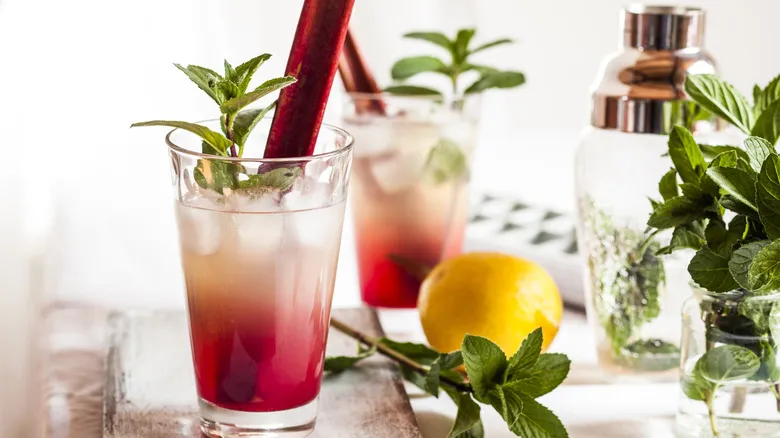
Rhubarb flavor is just as delightful in cocktails as it is in culinary dishes. In fact, it plays a role in the intricate flavor profiles of Aperol and Campari. For those who enjoy mixing drinks, rhubarb bitters can serve as a distinctive touch in your bar. The acidity of rhubarb brings a refreshing brightness and tang to beverages. Its vibrant color and tartness make it a popular choice in invigorating spring and summer cocktails, often paired with gin or vodka. You can create a rhubarb gin and tonic or a rhubarb vodka soda by incorporating a splash of rhubarb syrup, cordial, or purée. Alternatively, you can mix rhubarb cordial with Prosecco and soda water for a lighter, zesty spritz.
Rhubarb sodas are also available in various markets, providing a fantastic non-alcoholic option, particularly for those who prefer less sugary flavors. If you’re interested but can’t find any nearby, you can easily whip up your own rhubarb soda by mixing soda water with rhubarb syrup or cordial. And if those aren’t accessible, ordering rhubarb purée or a strawberry-rhubarb mix online is just a few clicks away.
If you have a juicer, consider juicing fresh rhubarb stalks. The resulting juice will be more tart than sweet, but it can complement other fruit juices nicely. Rhubarb wine exists as well, though it’s not typically found in most liquor stores.
Health and nutrition of rhubarb
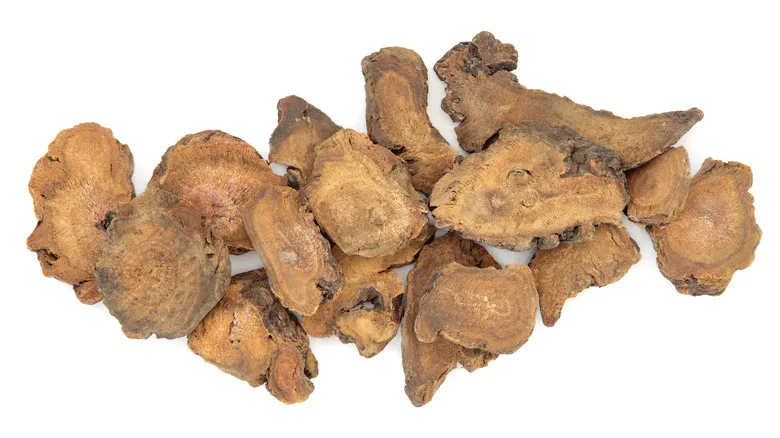
As previously noted, rhubarb has a long history of medicinal use, particularly for treating fevers and stomach discomfort. The ancient Chinese utilized rhubarb as a healing herb over 5,000 years ago, and it continues to be employed for alleviating constipation today. Research indicates that the anthocyanins and lycopene found in rhubarb may offer health benefits such as supporting healthy blood pressure, promoting kidney function, and potentially reducing cancer risk. Additionally, its high vitamin K content may aid in maintaining bone health. Rhubarb is also sometimes used in the management of renal failure, diabetic nephropathy, and pancreatitis.
However, it is advisable to consume rhubarb as a food rather than a supplement, as concentrated forms can pose serious health risks. We have already noted the presence of oxalic acid in the leaves and roots of the rhubarb plant, which is toxic to humans. It also contains calcium oxalate, which can lead to kidney stone formation. While rhubarb does contain a significant amount of calcium, this form is not easily absorbed by the body, so it should not be relied upon as a primary source of calcium. Nonetheless, rhubarb is a good source of manganese, vitamins C and K, as well as antioxidants and dietary fiber.
Be cautious! Rhubarb is among the foods that can produce unusual effects in your body. Similar to beets, it has the potential to turn urine red. If you've consumed rhubarb, keep this in mind before contacting your doctor the following morning.
Other uses for rhubarb

Rhubarb, characterized by its vibrant stalks, heart-shaped leaves, and flowers, is frequently cultivated for its visual appeal. It can enhance the beauty of a garden or serve as an attractive element in floral arrangements. Certain varieties of rhubarb are grown solely for ornamental purposes and are not intended for consumption.
In addition to its traditional applications in herbal medicine, rhubarb has various cosmetic uses. The plant's root is utilized in herbal hair treatments, believed to have a dyeing and lightening effect while also enhancing shine and removing product buildup. Many brands offer rhubarb-infused powders, masks, shampoos, and other hair care products. You can create your own rhubarb hair treatment by simmering fresh or dried rhubarb root in water, allowing it to steep, and then using it to wash your hair. Just remember to cover the pot while it simmers to avoid inhaling the oxalic acid released in the steam.
Rhubarb has also been employed for cleaning metal, tanning leather, and as a natural pest deterrent. The same oxalic acid that renders its roots and leaves inedible can be beneficial for these applications.
Storing rhubarb at home
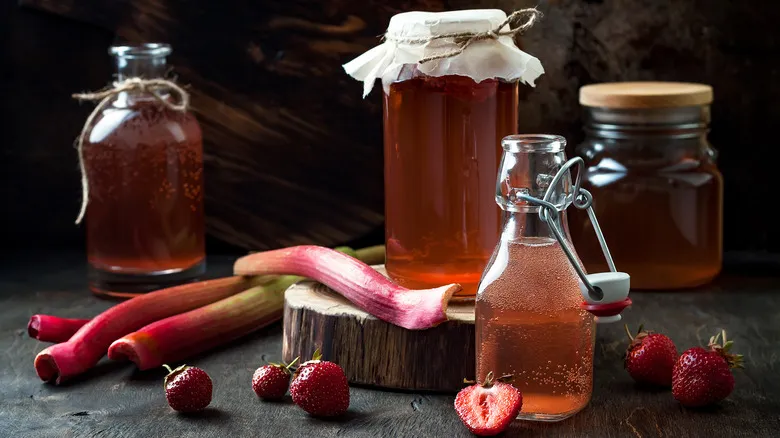
You've put in the effort to purchase some rhubarb and have cooked it down with sugar, spices, and all the delightful extras. What’s next? If your recipe requires only a small amount or you haven't decided how to use it yet, don’t worry. Cooked rhubarb can be kept in a sealed jar in the refrigerator for several days or even weeks, thanks to the added sugar. Rhubarb jam, in particular, has a good shelf life.
Fresh rhubarb that has been sliced can also be stored in an airtight container or tightly wrapped in plastic in the fridge for a few days. If you chop and freeze rhubarb, it can last up to a year in the freezer. For canned rhubarb, treat it like any other canned product: store it in a cool, dark place and make sure to consume it before the expiration date.
Recommended
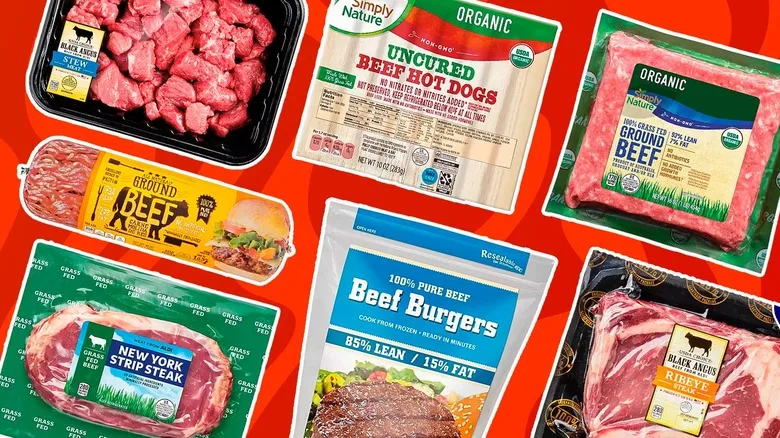
5 Cuts Of Beef To Buy At Aldi And 5 To Avoid
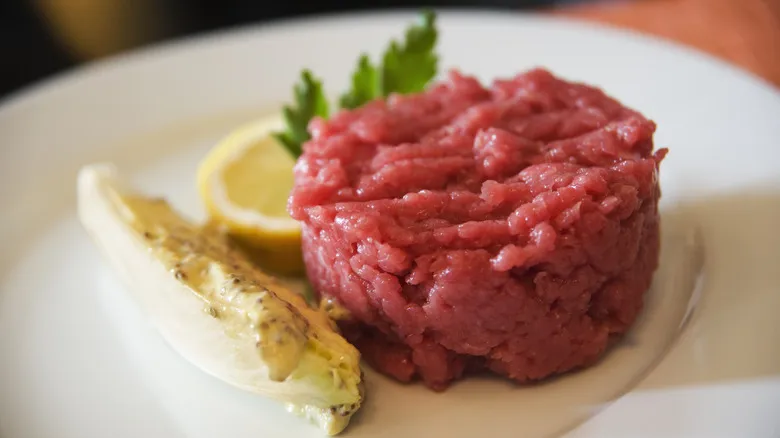
How To Buy Meat For Impressive Homemade Steak Tartare
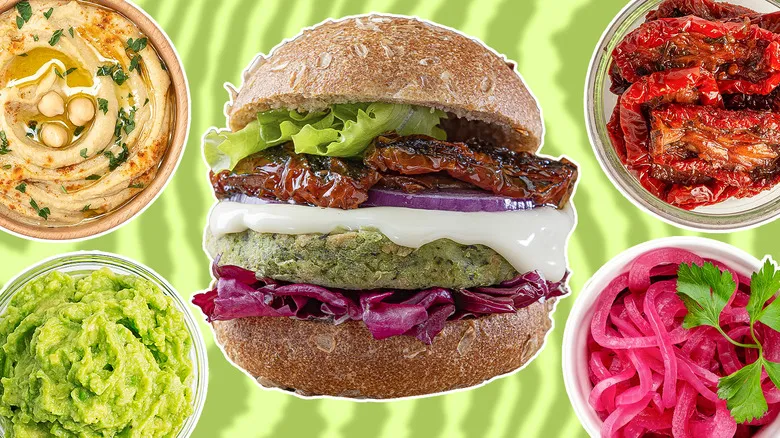
13 Toppings That Will Make Your Plant-Based Burger Shine
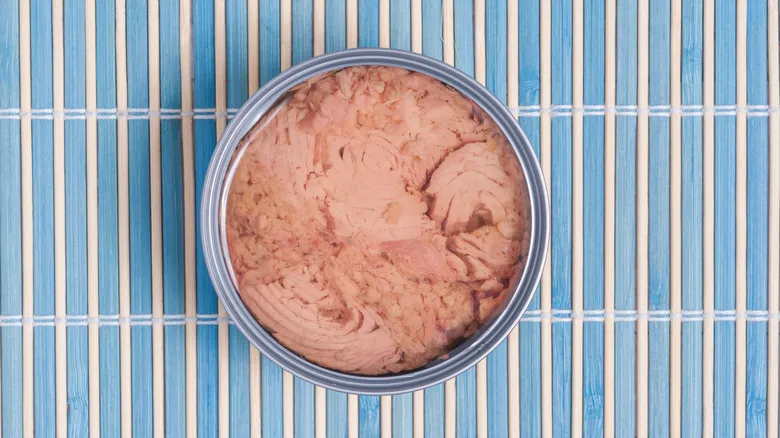
The Store-Bought Canned Tuna You Should Always Have On Your Shopping List
Next up

